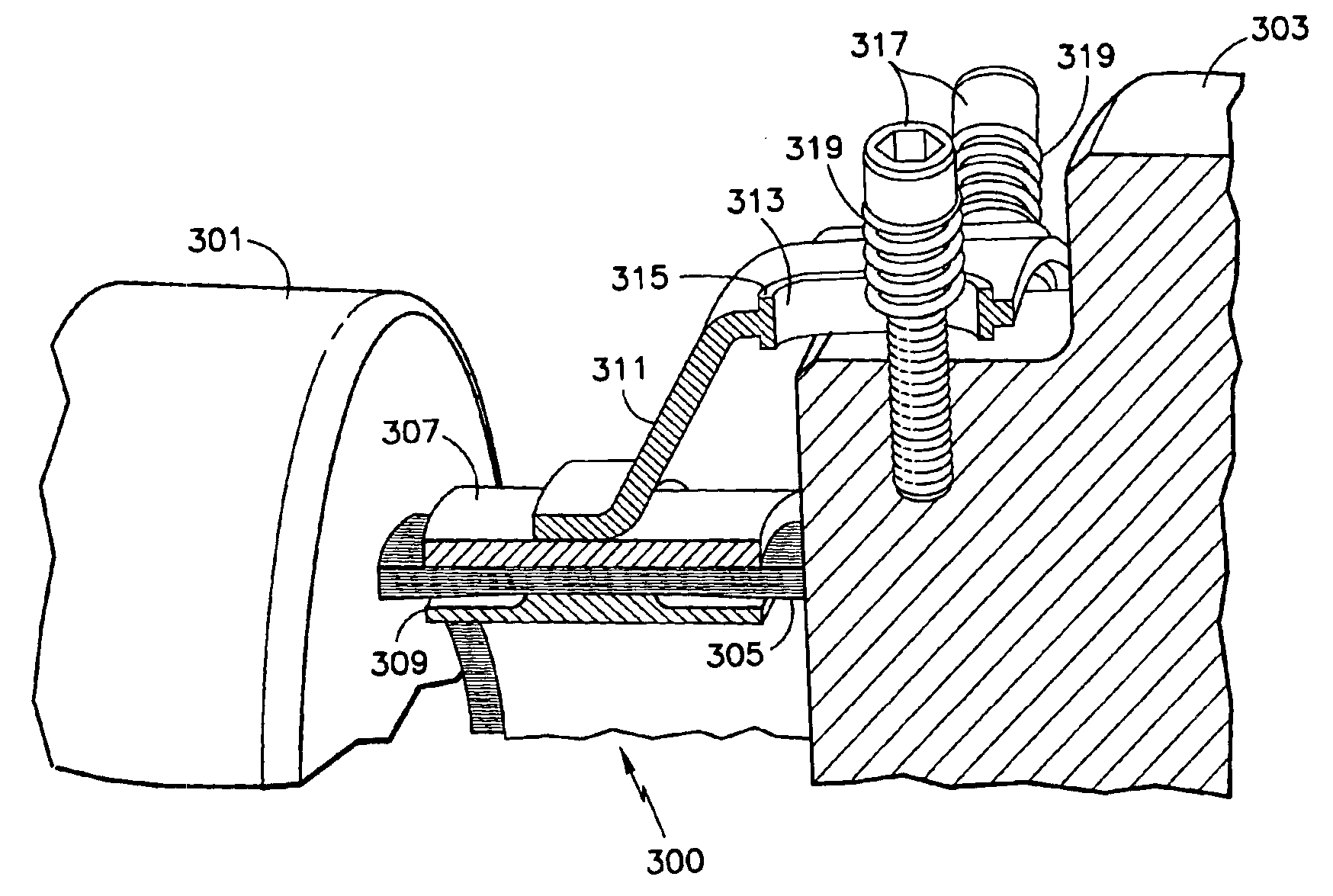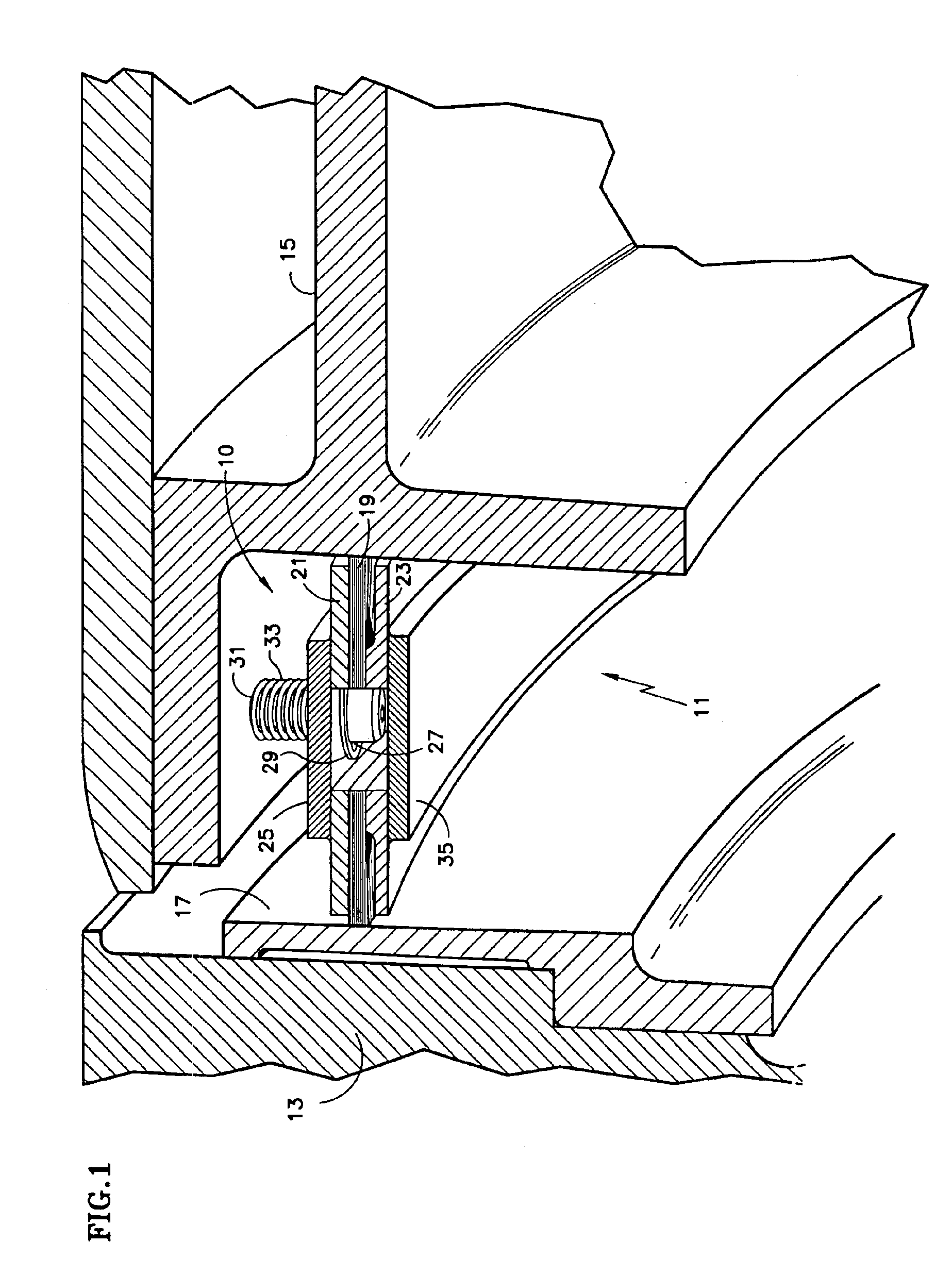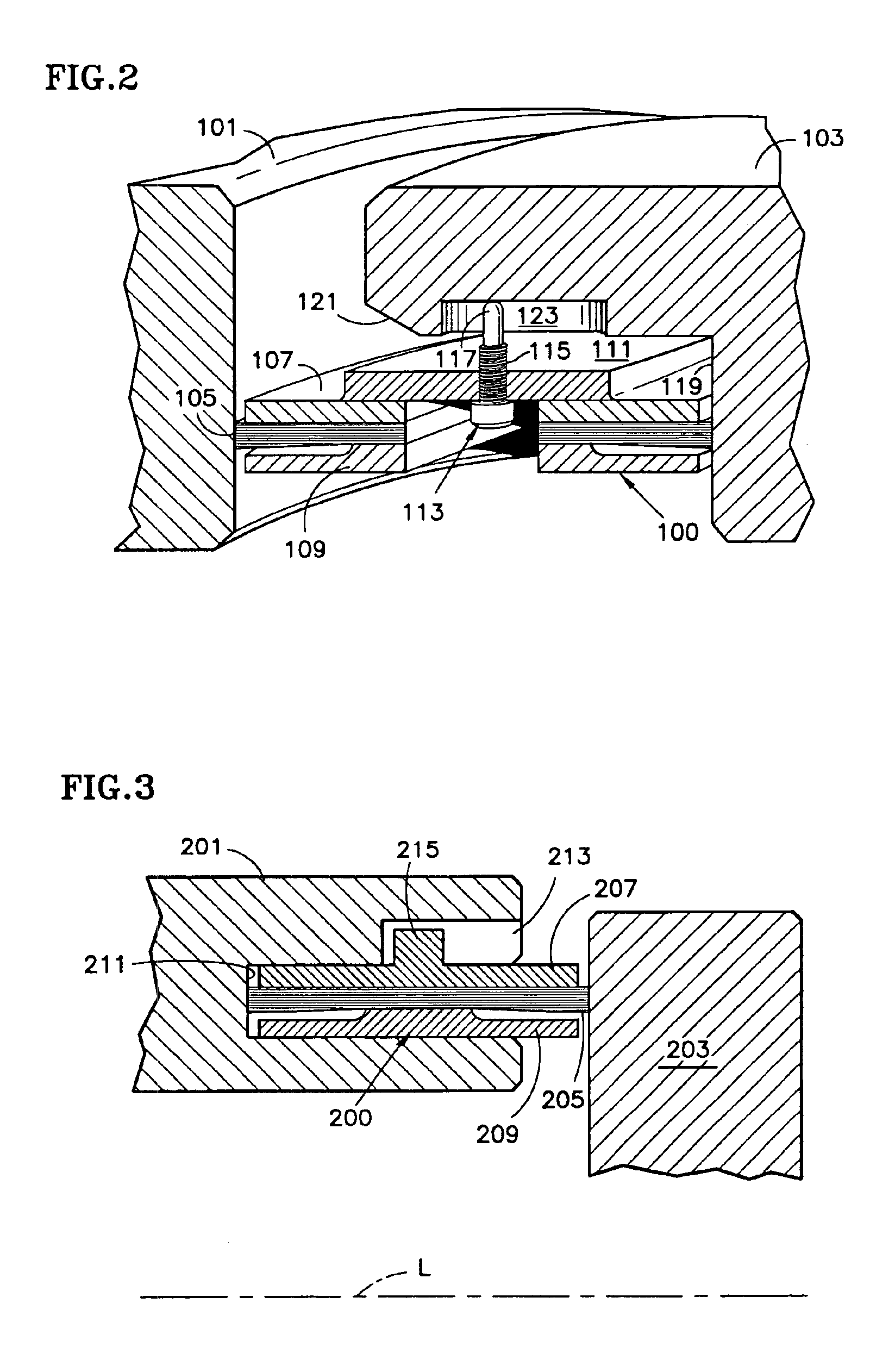Floating brush seal assembly
a technology of floating brush and seal assembly, which is applied in the direction of engine seals, gas turbine plants, machines/engines, etc., can solve the problems of reducing the leakage rate of the seal, the rigid teeth of the labyrinth seal cannot accommodate a “zero clearance” condition without incurring permanent wear or damage to the teeth, and the seal cannot be sealed with a “zero clearance” condition
- Summary
- Abstract
- Description
- Claims
- Application Information
AI Technical Summary
Benefits of technology
Problems solved by technology
Method used
Image
Examples
Embodiment Construction
[0018]FIG. 1 displays one alternative embodiment of the present invention. The figure provides a brush seal assembly 10 that inhibits fluid flow through a gap 11 between a first component 13 and a second component 15 of an apparatus such as a gas turbine engine. The components 13, 15 could be stationary or rotating components. The figure shows the first component 13 as a rotating component (such as a turbine disc). The component 13 could include a ring 17 that acts as a land surface for the brush seal assembly 10.
[0019]The figures also show the second component 15 as a stationary component (such as a turbine nozzle). Since the component 15 remains stationary, no need exists for a ring to provide a land surface like the rotating first component 13 may require. As seen in the figures, multiple elements could form the stationary component 15. Alternatively, both components could be stationary components such as adjacent sections of the engine case, compressor stators and the engine cas...
PUM
 Login to View More
Login to View More Abstract
Description
Claims
Application Information
 Login to View More
Login to View More - R&D
- Intellectual Property
- Life Sciences
- Materials
- Tech Scout
- Unparalleled Data Quality
- Higher Quality Content
- 60% Fewer Hallucinations
Browse by: Latest US Patents, China's latest patents, Technical Efficacy Thesaurus, Application Domain, Technology Topic, Popular Technical Reports.
© 2025 PatSnap. All rights reserved.Legal|Privacy policy|Modern Slavery Act Transparency Statement|Sitemap|About US| Contact US: help@patsnap.com



